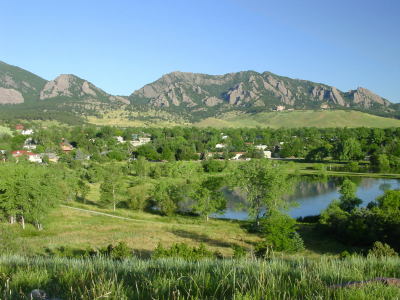 At its March 2 meeting, the Boulder City Council began a second reading of Phase One of the proposed “Tree Ordinance.” City landscape architect Elizabeth Lokocz made the staff presentation on the proposed regulations, providing their background and rationale.
At its March 2 meeting, the Boulder City Council began a second reading of Phase One of the proposed “Tree Ordinance.” City landscape architect Elizabeth Lokocz made the staff presentation on the proposed regulations, providing their background and rationale.
The issue began in 2007 with the demise of a champion horse chestnut tree at 11th and Spruce Streets as a result of construction of condos at the Howe Mortuary site. Public outcry over the loss of the tree compelled the city to pursue regulations to prevent similar losses in the future. Under current regulations, trees on public property or in the public right-of-way are well-protected. Trees on private property, however, are only subject to protection if they are part of a site review landscape plan, and then only guaranteed protection for 5 years. Trees are encouraged under the City’s Green Points program, but there is nothing to prevent developers, builders or homeowners from removing the trees after earning the points.
Development of tree protection regulations was split into 2 phases, with some groundwork regulations and benchmarks being proposed in Phase One and more stringent regulations left to Phase Two. Phase Two will take place later in 2010. The Phase One regulations, comprising 2 ordinances, will require:
- Arborist certification in the City of Boulder
- Increased inspection and enforcement of attention to diseased trees
- Tree inventories for all projects coming under review
- Landscape plans for site review to include trees adjacent to the property
- Extension of the landscape guarantee required with landscape plans
Three members of the public spoke at the Public Hearing, including Margery Goldman, the neighbor who lost the horse chestnut tree, all in support of the regulations. Council members had a number of issues with the specific language of the proposed ordinances, as well as some issues with the intent of the regulations. Responses were given by both Ms. Lokocz and Kathleen Alexander (City Forester).
Concerns about the potential additional costs to homeowners due to the arborist certification requirements were substantially dispelled by Ms. Lokocz’s and Ms. Alexander’s explanations that most of the tree maintenance companies already have certified arborists and that certified arborists have skills that are needed to properly maintain trees, protecting homeowners and saving costs in the long term.
KC Becker was concerned that it seemed unreasonable to require landowners and developers who have obtained approved landscape plans (and Green Points) as part of their project approvals to maintain their trees beyond the current requirement of 5 years. She cited the Broadway Brownstones as an example.
There was no vote on the ordinances. Council decided that there were enough questions about the language of the proposed ordinances that the hearing needed to be continued to some later date, after staff had had a chance to address some of the issues.


